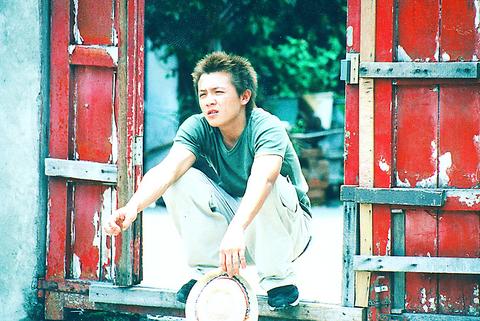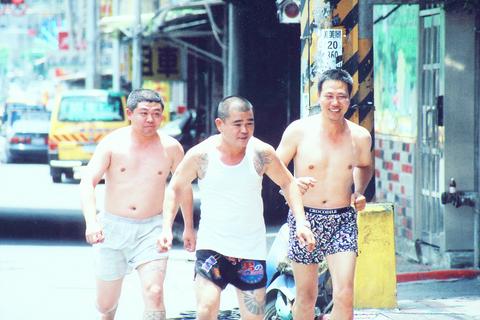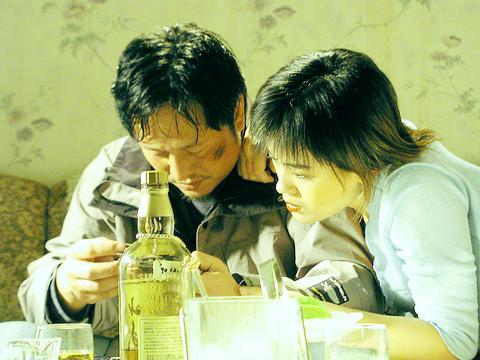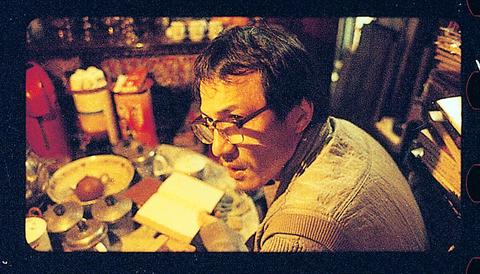Chinese is becoming the lingua franca of Lido Island in Venice, Italy. No less than five Chinese-language films are screening at the 59th Mostra Internazionale de Arte Cinematografica, or Venice Film Festival, which will take place from Aug. 29 to Sept. 8. Two of the five are from Taiwanese filmmakers.
The Best of Times (美麗時光), by Taiwan's own Chang Tso-chi (張作驥), is the only Chinese-language film selected to compete for the festival's highest prize, the Golden Lion. Hong Kong filmmaker and frequent guest at Venice, Fruit Chan (陳果), who last year brought his Hong Kong Hollywood, and Durian Durian (榴槤飄飄) the year before, this year brings his digital film Public Toilet to screen in the festival's Against the Mainstream section. In that same section are Chinese filmmaker Tian Zhuangzhuang's (田壯壯) 1930s drama Springtime in a Small Town (小城之春), and Missing Gun (尋槍) by China's Lu Chuan (陸川).
Cheng Wen-tang (

The festival's new artistic director, Moritz de Hadeln, announced the line-up of participating films last week. The opening film will be Julie Taymor's Frida, about the life of Mexican artist Frida Kahlo, played by Salma Hayek, whose life was closely intertwined with Central American history. Also in the competition are Steven Soderbergh's latest feature, Full Frontal, Liliana Cavani's Ripley's Game and Japanese director Takeshi Kitano's Doll.
Adding to the festival's Chinese attributes, festival organizers earlier announced that Chinese actress Gong Li (鞏俐) will serve as the jury chairperson, after leading the judges in Berlin in 2000 and at Cannes in 1997.
Filmmakers from Taiwan, Hong Kong and China are no strangers to the Golden Lion. In 1989, Hou Hsiao-hsien's (侯孝賢) City of Sadness (悲情城市), an epic about the 228 incident, was the first Taiwanese film to win the award. Then in 1994, Tsai Ming-liang (蔡明亮) walked away with the Golden Lion for his second feature, Vive L'Amour (愛情萬歲). Chinese director Zhang Yi-mou (張藝謀) took the award in 1999 for Not One Less (一個都不能少).

Chinese film fever seemed to take a rest last year, winning fewer awards and garnering smaller attention at major film festivals. But Chang's The Best of Times is now taking the lead to create further international hype for Chinese-language films.
Chang, winner of the 2000 Tokyo Film Festival for his Darkness and Light (黑暗之光), is known for his stories of people living at the fringe of the society. Ah-Chung tells the story of disaffected youth living in a shantytown outside Taipei and Darkness centers around blind characters. The Best of Times has been praised by critics in Taiwan as Chang's best work. The story revolves around two teenage boys from troubled families who frequent a fetid sewer near their homes.
Films about people at the fringe of society sounds like a familiar topic for many Taiwanese films, following Hou's style of social realism. But in Chang's films there is always another layer under the truthfulness; a strong romanticism, almost surreal in the humble lives of his characters. Exciting gang-fights are juxtaposed against the sentimental lights and shadows of the corner of a rainy day, sunsets by the sewer and the beautiful coral reefs where the two boys swim. And by the bed of a girl suffering from Leukemia there appears a unicorn. "Magical realism" could be used to describe the power behind the story. The Best of Times is Chang's third feature and his best chance yet competing against the likes of Kitano and Soderbergh.

Another Taiwanese entry, Cheng Wen-tang's Somewhere Over the Dreamland is a story about two Aboriginal men having different adventures in urban Taipei. One has mysterious dreams about his lost wallet and rice field. The other, a worker at a Japanese restaurant, always kills time at phone sex games, meets with a bizarre girl who tells him about a dream involving a rice field.
Cheng began movie-making in 1996. The film is his second feature film.


This month the government ordered a one-year block of Xiaohongshu (小紅書) or Rednote, a Chinese social media platform with more than 3 million users in Taiwan. The government pointed to widespread fraud activity on the platform, along with cybersecurity failures. Officials said that they had reached out to the company and asked it to change. However, they received no response. The pro-China parties, the Chinese Nationalist Party (KMT) and Taiwan People’s Party (TPP), immediately swung into action, denouncing the ban as an attack on free speech. This “free speech” claim was then echoed by the People’s Republic of China (PRC),

Exceptions to the rule are sometimes revealing. For a brief few years, there was an emerging ideological split between the Democratic Progressive Party (DPP) and Chinese Nationalist Party (KMT) that appeared to be pushing the DPP in a direction that would be considered more liberal, and the KMT more conservative. In the previous column, “The KMT-DPP’s bureaucrat-led developmental state” (Dec. 11, page 12), we examined how Taiwan’s democratic system developed, and how both the two main parties largely accepted a similar consensus on how Taiwan should be run domestically and did not split along the left-right lines more familiar in

As I finally slid into the warm embrace of the hot, clifftop pool, it was a serene moment of reflection. The sound of the river reflected off the cave walls, the white of our camping lights reflected off the dark, shimmering surface of the water, and I reflected on how fortunate I was to be here. After all, the beautiful walk through narrow canyons that had brought us here had been inaccessible for five years — and will be again soon. The day had started at the Huisun Forest Area (惠蓀林場), at the end of Nantou County Route 80, north and east

Specialty sandwiches loaded with the contents of an entire charcuterie board, overflowing with sauces, creams and all manner of creative add-ons, is perhaps one of the biggest global food trends of this year. From London to New York, lines form down the block for mortadella, burrata, pistachio and more stuffed between slices of fresh sourdough, rye or focaccia. To try the trend in Taipei, Munchies Mafia is for sure the spot — could this be the best sandwich in town? Carlos from Spain and Sergio from Mexico opened this spot just seven months ago. The two met working in the